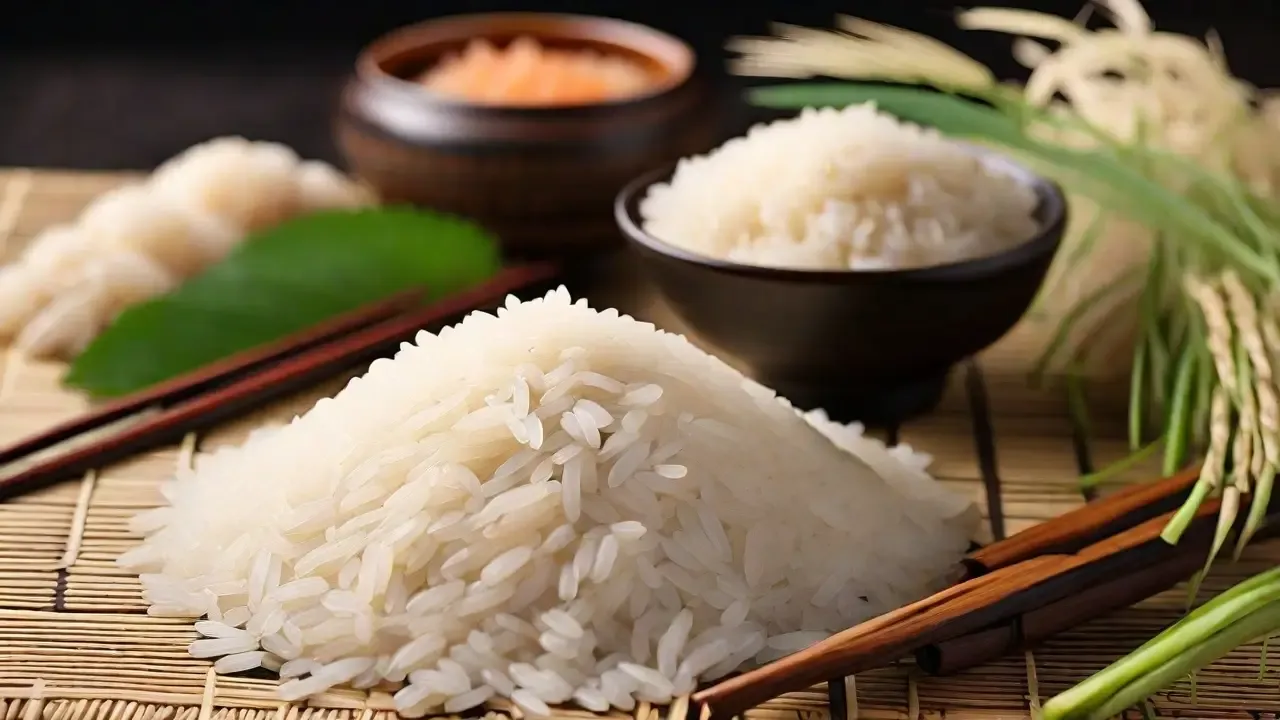Rice:
Rice, a staple food for over half of the world's population, is more than just a dietary mainstay; it's a cultural icon with a rich history. Whether you enjoy it as a side dish, in sushi, or as a comforting bowl of risotto, rice plays a significant role in our daily lives. In this article, we'll delve into the world of rice, exploring its various types, nutritional benefits, and its deep-rooted cultural significance.
 |
| Rice |
Table of Contents
- Types of Rice
- Nutrition Facts
- Cultural Significance
- Cooking Methods
- Health Benefits
- Rice in Cuisine
- Questions and Answers
- Conclusion
Types of Rice
Rice comes in various types, each with unique characteristics. The most common types include:
- Long-Grain Rice: Known for its slender and elongated grains, long-grain rice is perfect for pilafs and salads.
- Short-Grain Rice: Short-grain rice is starchy and ideal for dishes like sushi and risotto.
- Basmati Rice: This fragrant rice variety is a staple in Indian and Middle Eastern cuisine.
- Jasmine Rice: Recognized for its floral aroma, Jasmine rice pairs wonderfully with Asian dishes.
Nutrition Facts
Rice is not only delicious but also a nutritious choice:
- Carbohydrates: Rice is a rich source of complex carbohydrates, providing sustained energy.
- Fiber: Brown rice is high in fiber, aiding in digestion and promoting a feeling of fullness.
- Vitamins and Minerals: Rice contains essential nutrients like B vitamins, iron, and selenium.
Cultural Significance
Rice holds a special place in the cultures of many countries:
- Asian Cuisine: Rice is the cornerstone of Asian cuisine, with varieties like Basmati and Jasmine elevating dishes.
- Japanese Tradition: In Japan, rice is not just food; it's a symbol of the country's culture and identity.
- Indian Festivals: Many Indian festivals and rituals revolve around rice, signifying prosperity and well-being.
Cooking Methods
There are various ways to cook rice, depending on the desired texture and flavor:
- Boiling: The most common method, where rice is simmered until tender.
- Steaming: Ideal for preserving the individual grain structure of long-grain rice.
- Sauteing: Perfect for creating fragrant and flavorful rice dishes like pilaf.
Health Benefits
Rice offers several health benefits:
- Heart Health: Brown rice, in particular, may reduce the risk of heart disease due to its fiber content.
- Weight Management: Rice can be part of a balanced diet, aiding in weight control when consumed in moderation.
- Gut Health: The fiber in rice supports a healthy gut and regular digestion.
Rice in Cuisine
Rice plays a vital role in diverse cuisines worldwide:
- Paella (Spain): A flavorful Spanish dish made with saffron-infused rice, seafood, and vegetables.
- Sushi (Japan): The hallmark of Japanese cuisine, sushi features vinegared rice, fresh fish, and vegetables.
- Risotto (Italy): Creamy Italian rice dish cooked with broth and various ingredients like mushrooms or seafood.
Questions and Answers
1. Is rice gluten-free?
Yes, rice is naturally gluten-free, making it an excellent choice for individuals with gluten sensitivities or celiac disease.
2. Can rice be part of a weight loss diet?
Indeed, rice can be a part of a weight loss diet when consumed in moderation and as part of a balanced meal plan.
3. How is sushi rice different from regular rice?
Sushi rice is specially seasoned with vinegar, sugar, and salt to create a unique flavor and sticky texture ideal for sushi preparation.
4. What are the main differences between white and brown rice?
White rice is polished to remove the bran layer, while brown rice retains the bran, making it higher in fiber and nutrients.
5. Can I use rice in dessert recipes?
Absolutely, rice is versatile and can be used in various dessert recipes, such as rice pudding and rice cakes.
6. Why is rice such a significant part of Asian cultures?
Rice's abundance and versatility have made it a fundamental component of Asian cuisine, culture, and daily life for centuries.
Conclusion
In conclusion, rice is not just a dietary staple; it's a grain with a global legacy. Its various types, nutritional value, and cultural significance have made it a cherished ingredient in kitchens around the world. Whether you savor a bowl of fragrant Basmati, enjoy the comfort of risotto, or roll sushi with precision, rice continues to be an essential part of our lives. So, embrace this versatile grain, explore its many flavors, and appreciate its role in diverse cultures.
Whether you're looking for a satisfying meal or a cultural experience, rice is there to meet your cravings and connect you to traditions across the globe.


